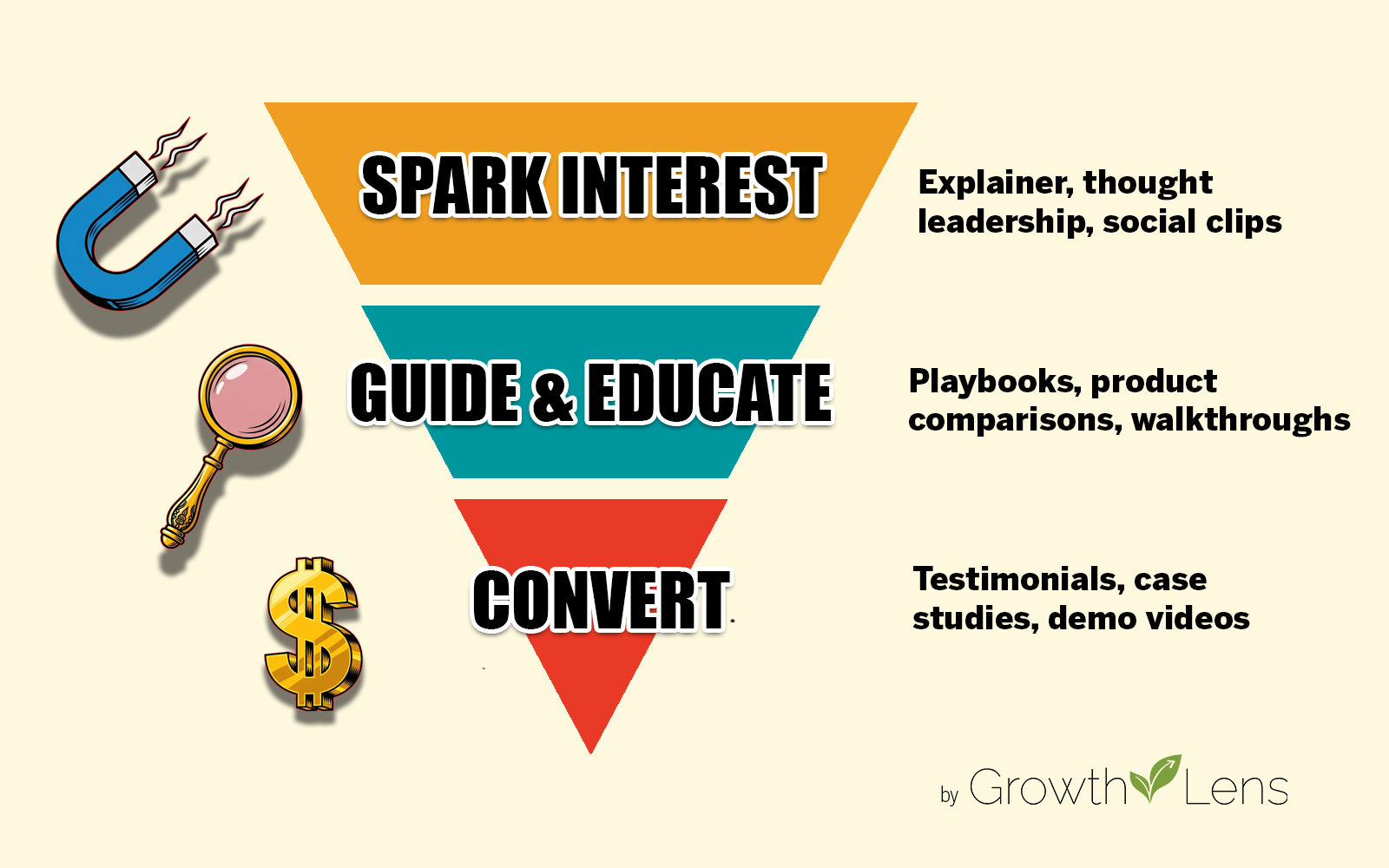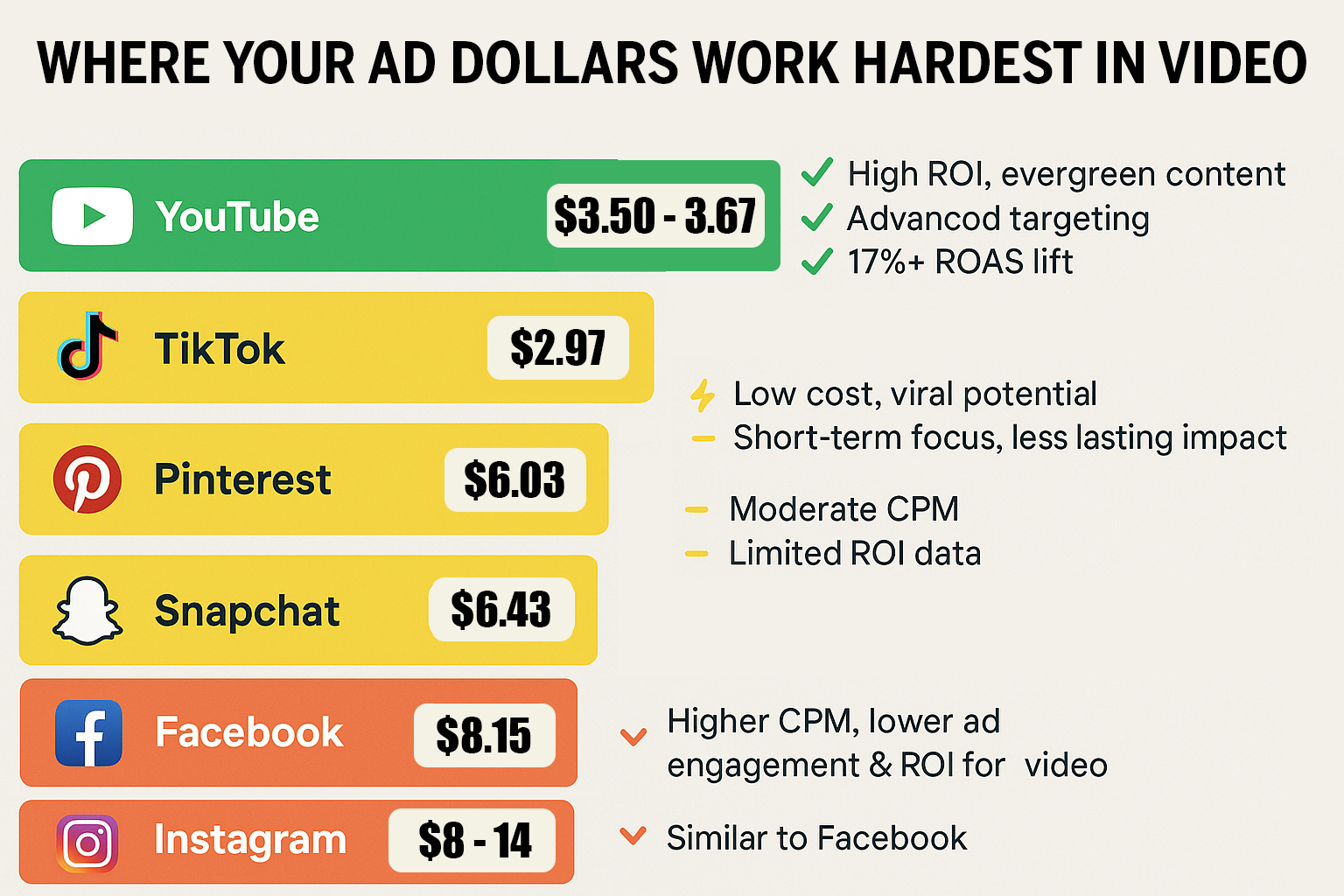Most cybersecurity companies fail on YouTube because they lack a structured marketing strategy. They post inconsistently, focus on technical content that doesn’t connect with buyers, and ignore the funnel-driven approach top-performing channels use to generate leads and build authority.
97% of cybersecurity companies fail on YouTube — not because they lack expertise in threat detection or network defense, but because they lack marketing expertise.
They treat YouTube like a place to post demos or webinars instead of a growth engine. The problem isn’t technical skill — it’s missing strategy.
Successful channels like John Hammond or Unix Guy aren’t winging it. They follow repeatable frameworks designed to attract, educate, and convert viewers into leads.
The best cybersecurity creators use four key strategies:
Each layer builds trust and visibility while moving viewers closer to purchase. Let’s break them down.
Organic content is your 24-hour sales engine. It builds brand trust and authority before any ad spend.
Cybersecurity companies often chase quick hacks — ads, shoutouts, or viral shorts — but the truth is, organic content drives long-term growth. It works while you sleep, showing your expertise to potential clients who are actively researching solutions.
At GrowthLens, we’ve seen channels transform simply by fixing their organic content strategy. For one client, optimizing thumbnails, titles, and video topics led to a 3x increase in watch time and a surge of qualified inbound leads.
💡 Stat to know: 95% of B2B buyers say video plays a crucial role in their purchase decisions.
Every video should have a clear role in your funnel — not just “educate,” but convert. The best channels follow this three-stage model:
Tackle big topics that spark curiosity — industry misconceptions, trending threats, or emerging attack types.
Goal: Build credibility and position your brand as the go-to expert.
Share frameworks, compare tools, or explain mitigation strategies.
Goal: Build trust and guide viewers toward your solution.
Highlight case studies, ROI data, and before-and-after results.
Goal: Remove doubt and convert attention into leads.
Example: CrowdStrike and SilentPush consistently publish structured content that covers all three stages, creating predictable growth and brand authority.

Once your organic strategy works, ads become your amplifier — not your foundation.
Reddit is full of advice saying “YouTube ads don’t work,” but the data tells a different story. With CPMs between $4 and $10, cybersecurity companies can reach 1,000 potential clients for the cost of a coffee.
The trick? Only promote videos that already perform well organically. That’s how you scale what works instead of wasting ad spend on guesses.

Absolutely. In cybersecurity, trust drives leads, and influencer marketing accelerates trust faster than almost any other channel.
When respected creators like John Hammond or niche educators mention your tool, their credibility transfers to your brand. The key is alignment — choose creators whose audience mirrors your target buyer.
Smaller creators who review firewalls, pentesting tools, or SOC frameworks often deliver the highest-quality B2B leads — even if they only get 20,000 views.
If this all sounds like a lot — it is. Most cybersecurity companies don’t have the bandwidth or YouTube expertise to handle it alone.
That’s why top-performing brands partner with YouTube-first growth agencies like GrowthLens.
A good agency doesn’t just manage uploads. They:
The cybersecurity companies dominating YouTube don’t post more — they post strategically.
They treat YouTube as a revenue engine, not a repository.
They invest in organic content first, use ads as an amplifier, and collaborate with trusted creators to accelerate trust.
If you want to transform your channel into a predictable lead machine, it starts with one step: a channel audit.
Want to see what’s holding your YouTube channel back?
Get a free GrowthLens channel audit today and uncover the exact playbook to generate qualified leads, lower CAC, and become the trusted voice in cybersecurity.